Geoblog.pl  bzmot
bzmot  Podróże
Podróże  Łosie okrakiem przez Amerykę - V2.0 - The Moose Do America Again - Click Here!!!
Łosie okrakiem przez Amerykę - V2.0 - The Moose Do America Again - Click Here!!!  Santiago de Chile
Santiago de Chile
 bzmot
bzmot  Podróże
Podróże  Łosie okrakiem przez Amerykę - V2.0 - The Moose Do America Again - Click Here!!!
Łosie okrakiem przez Amerykę - V2.0 - The Moose Do America Again - Click Here!!!  Santiago de Chile
Santiago de Chile 
Kolejnych parę dni spędziliśmy w Santiago. Tym razem udało nam się trafić na słoneczną pogodę, całe szczęście, bo w deszczu i chłodzie nas do siebie nie zachęciło. Owszem, przyznajemy ze jest jak na Amerykę Płd. nietypowe, bo to, co się ciągnie kilometrami od centrum to nie limeńskie parterówki tylko zwarta zabudowa wzdłuż szerokich i przejezdnych ulic. Chodniki szerokie, sporo zieleni miejskiej - ogólne wrażenie niemieckiego ładu. Z tą różnicą, ze sąsiadujące ze sobą budynki nie musza ze sobą współgrać stylem ani wysokością. Turystów jak na lekarstwo, miejscowi nie traktują stolicy jak atrakcji, wiec nawet nie ma sklepów z pamiątkami. No i rzeczywiście miasto nie rzuca na kolana, ale wyobrażam sobie, ze się w nim dość wygodnie mieszka - jeżeli nie trzeba jeździć transportem publicznym - bo tłok bywa straszny albo nic nie przyjeżdża. Ale jest jedno miejsce, dla którego absolutnie warto do stolicy zawitać - barrio Bellavista. Jest to nocne serce miasta, ale trzeba je zobaczyć za dnia, bo w świetle latarni nie widać tych wariackich kolorów fasad. Wszystko jest non-stop odnawiane, przynajmniej trzy razy widzieliśmy jak fasadę odmalowują, raz nawet spod spodu wyglądały te same kolory i wcale jeszcze nie wyblakł. Mieści się tu tez jeden z trzech domów Nerudy. Bardzo niebanalne wnętrza, pełno fajnych bibelotów i ciekawe anegdoty. Na przykład ze Pablo wcale nie przybrał nowego nazwiska w hołdzie dla Jana Nerudy, którego poezji wcale nie znal, a tylko dlatego ze w szczenięcych latach wyczytał to nazwisko w gazecie i odtąd za nim chodziło, hihi. Podobnym poczuciem humoru i fantazja wykazał się, zamawiając do jednego z pokojow pochyla i trzeszcząca podłogę, żeby czuć się w nim jak na statku. W porównaniu z Bellavista La Boca okazuje się nędznym skansenem, gdzie trzeba chodzić wytyczona trasa, bo pójdziesz o jeden róg za daleko i już wpadasz na brud, smród i szemrane towarzycho. A w dodatku przez cala wizytę tam oblegają cię sprzedawcy pamiątek i lafiryndowate tancerki namawiające do wspólnego zdjęcia. I żaden porteño tam nie jeździ, a jak my stamtąd wracaliśmy, to znajomi się krzywili i pytali czy bardzo śmierdziało (bo ponoć rzeka jest tam strasznie zasyfiona). Bellavista jest zaś faktycznie ulubionym miejscem lokalnych, jest knajpa na knajpie, pełno fajnych graffiti na ścianach i rzędy pięknie odnowionych dziewiętnastowiecznych kamienic, w ryzykownych zestawieniach kolorystycznych. W jednym z takich domków byliśmy nawet na urodzinach kolegi, w niedzielę wielkanocną, fajna alternatywa dla biblijnych superprodukcji w tv. Nasz kolejny gospodarz, Fernando, zabrał nas tez na wzgórze San Cristobal, skąd rozciąga się panorama całego miasta i znakomicie widać, ze nie widać (z powodu smogu) otaczających go ośnieżonych gór. Wieczorem przyjemnie odsapnąć gapiąc się na kolorowe tańczące fontanny przy stacji metra Salvador. Są w samym centrum, wiec można o nie zahaczyć po drodze na przystanek. Trafił nam się jeden dzień na opak. Najpierw przez pół dnia szukaliśmy muzeum, które, jak się okazało, znajduje się w innym mieście. Podany adres znaleźliśmy, dojechaliśmy z przesiadka na jakieś zadupie, gdzie nic tylko domki mieszkalne, trzeba było widzieć minę pana w monopolu, jak spytalismy, czy w jego sklepie nie było kiedyś muzeum...Potem poszliśmy do kina na 300 i weszliśmy do sali obok na seans, który zaczął się 45 minut wcześniej, bo upierałam się ze przed chwila słyszałam reklamy. Na koniec dojechaliśmy do domu i okazało się ze nie pamiętamy adresu dokładnie, wiec musieliśmy zbudzić gospodarza, żeby nas pokierował. Ups! Dobrze, że na co dzien. jesteśmy bardziej gramotni. Jeżeli chodzi o lokalna gastronomie, to w Santiago najbardziej nam smakował żurek (longaniza parillera prawie jak biała kiełbasa)i langosze - jak dobrze mieć dostęp do kuchni! Poza niezła masterpizza (calle Lyra róg Curico), a raz jedliśmy też w knajpie polecanej przez kolegów jako supertradycyjna i pyszna a niedroga (Galindo, rog Dardignac i Constitución).No cóż, za 90 zł, które zapłaciliśmy (bez przystawek, tylko dania główne i surówka) to w nawet w dość drogim jak na Argentynę Bariloche możemy zjeść dwa dużo smaczniejsze obiady, wiec szkoda nam się szarpać. W Chile kilka razy nam się zdarzyło, ze nas przed jakimś miejscem przestrzegano, bo niebezpieczne. W tej kwestii Chilijczykom Wierzyc nie należy, bo maja zawyżone standardy jak na Amerykę. Na przykład Santiago uchodzi za niebezpieczne. Faktycznie, Francisco wracał kiedyś z imprezy, trochę nadzwoniony, a tu go jakiś lump zaczepia, żeby go wspomóc. I sięga łapą za pazuchę, niby po bron. A Francisco, po paru piwach, zamiast się przestraszyć, mówi mu ze jest biednym studentem i ze ma tylko 3 zl. Lump się zlitował, wziął polowe i mówi: słuchaj, stary, tu jest niebezpieczna okolica, ja cię odprowadzę do domu, żeby cię kto czasem nie napadł. ;-)
W przewodniku czytaliśmy ze w Pucón (brama do krainy jezior) nie zaleca się samodzielnych spacerów nad jezioro, bo był jeden przypadek rozboju, hihi.
We spent the next few days in Santiago. This time we get some sunny weather, luckily, cuz the city is very discouraging with rain and chilly wind. We agree that for South America it’s quite unusual as what sprawls for kilometers from the downtown is nothing like Lima’s one-story high shabby houses. Here you have neat buildings along wide and uncongested avenues. Sidewalks are wide, there’s lots of city green and the general impression is that of an orderly German city. The difference is that the adjacent buildings will not necessarily match in style or height. Tourists are hard to find and the locals don’t consider the city to be a sightseeing attraction, so there are hardly any souvenir stores. Fair enough, the city does not sweep you off your feet but I can imagine that it is quite comfortable to live in if you don’t have to rely on public transport as it gets really crowded or the bus won’t arrive for long minutes. But there is one area that makes it worthwhile coming to Santiago – the Bellavista barrio. It’s the city’s night district but you need to see it during the day as in the streetlamp light you won’t see the crazy colors of the facades. Everything is renovated on a regular basis, we saw at least three times a facade being repainted and once it had the same colors underneath and they haven’t even faded yet. The barrio also features one of Neruda’s houses, featuring imaginative interiors, lots of cool bric a brac and anecdotes. For example Pablo did not adopt the new last name as a tribute to the Czech Jan Neruda, whose poetry he even didn’t know but because as a kid he read this name in the paper and it would haunt him ever since. Another example of his unique sense of humor was ordering a sloping and cracking floor to one of the rooms so that one feels like being on a ship. Compared to Bellavista, La Boca turns out a cheesy film set, where you need to follow the beaten track cuz if you go one block too far you bump into dirty and smelly neighborhood with not a very friendly crowda round. On top of that, all throughout your visit, you get accosted by souvenir sellers and slutty dancers asking you to pose for a photo together. And no porteño ever goes there and when we were coming back from there, our friends would cringe and ask how bad it smelt (apparently the river is very polluted there). Bellavista, however, is indeed the locals’ favorite spot, with plenty of restaurants and bars and lots of graffiti paintings on the walls, and rows of beautifully revovated 19 century houses painted in daring color combinations. We even went to one of such houses for a frien’d birthday party, on the Easter Sunday. What a nice alternative to Bible flicks on tv. Our next host, Fernando, also took us to the San Cristobal hill with a panoramic view of the entire city where you can very well see that you can’t see (because of the smog) the snow-peaked mountains surrounding it. In the evening it’s very relaxing to gape at the colorful dancing fountains near the Salvador subway station. They are in the very center so you can see them on your way to the bus stop. We had one day of utter silliness. First we spent half a day looking for a museum that exists alright but in a different city. We found the address on the map, we took two buses to get to a very quite neighborhood with just houses around. You should have seen the face of the liquor store owner when we asked him if there used yo be a museum in his store...Next, we went to the multiplex to watch „300” and we got to the wrong cinema where the movie already started 45 minutes earlier as I insisted I had just heard the trailers. In the end we went home and it turned out none of us remembers exactly the address so we had to wake up our host for directions. What a disaster day! It’s so good to know we are more sensible on normal days. As for local food, what we liked mosted in Santiago was Polish zurek soup (longaniza parillera almost like Polish white sausage) and langosh pancakes – what a relief to have access to the kitchen! Apart from the nice masterpizza (calle Lyra corner of Curico), we once ate at a restaurant recommended by friends as supertraditional, delicious and cheap (Galindo, corner of Dardignac and Constitución). Well, for the 30 bucks we spent just for the main course and salad, we would have two nicer dinners even in the expensive Bariloche so we don’t see the point in splurging here. It happened to us on several occasions that Chileans warned us that a given place is dangerous. You should take it with a pinch of salt as the Chileans have too high standards for America. For example Santiago is considered dangerous. Indeed, Francisco was once coming back from a party, a little but hammered and a bum comes up to him asking for money. And keeping his hand in the pocket as if fishing for a knife or a gun. Francisco, however, under the soothing influence of some beers, instead of running scared, tells him that he’s a poor student and has only a dollar on him. The bum feels sorry for him, takes just half of it and goes like: listen, man, it’s kinda dangerous here, let me walk you a couple of blocks so nobody mugs you. ;-)
In the guidebook we read that in Pucón (the gateway to the lakeland) it is not recommended to walk alone to the lake as there was one case of mugging. Gee, man.
W przewodniku czytaliśmy ze w Pucón (brama do krainy jezior) nie zaleca się samodzielnych spacerów nad jezioro, bo był jeden przypadek rozboju, hihi.
We spent the next few days in Santiago. This time we get some sunny weather, luckily, cuz the city is very discouraging with rain and chilly wind. We agree that for South America it’s quite unusual as what sprawls for kilometers from the downtown is nothing like Lima’s one-story high shabby houses. Here you have neat buildings along wide and uncongested avenues. Sidewalks are wide, there’s lots of city green and the general impression is that of an orderly German city. The difference is that the adjacent buildings will not necessarily match in style or height. Tourists are hard to find and the locals don’t consider the city to be a sightseeing attraction, so there are hardly any souvenir stores. Fair enough, the city does not sweep you off your feet but I can imagine that it is quite comfortable to live in if you don’t have to rely on public transport as it gets really crowded or the bus won’t arrive for long minutes. But there is one area that makes it worthwhile coming to Santiago – the Bellavista barrio. It’s the city’s night district but you need to see it during the day as in the streetlamp light you won’t see the crazy colors of the facades. Everything is renovated on a regular basis, we saw at least three times a facade being repainted and once it had the same colors underneath and they haven’t even faded yet. The barrio also features one of Neruda’s houses, featuring imaginative interiors, lots of cool bric a brac and anecdotes. For example Pablo did not adopt the new last name as a tribute to the Czech Jan Neruda, whose poetry he even didn’t know but because as a kid he read this name in the paper and it would haunt him ever since. Another example of his unique sense of humor was ordering a sloping and cracking floor to one of the rooms so that one feels like being on a ship. Compared to Bellavista, La Boca turns out a cheesy film set, where you need to follow the beaten track cuz if you go one block too far you bump into dirty and smelly neighborhood with not a very friendly crowda round. On top of that, all throughout your visit, you get accosted by souvenir sellers and slutty dancers asking you to pose for a photo together. And no porteño ever goes there and when we were coming back from there, our friends would cringe and ask how bad it smelt (apparently the river is very polluted there). Bellavista, however, is indeed the locals’ favorite spot, with plenty of restaurants and bars and lots of graffiti paintings on the walls, and rows of beautifully revovated 19 century houses painted in daring color combinations. We even went to one of such houses for a frien’d birthday party, on the Easter Sunday. What a nice alternative to Bible flicks on tv. Our next host, Fernando, also took us to the San Cristobal hill with a panoramic view of the entire city where you can very well see that you can’t see (because of the smog) the snow-peaked mountains surrounding it. In the evening it’s very relaxing to gape at the colorful dancing fountains near the Salvador subway station. They are in the very center so you can see them on your way to the bus stop. We had one day of utter silliness. First we spent half a day looking for a museum that exists alright but in a different city. We found the address on the map, we took two buses to get to a very quite neighborhood with just houses around. You should have seen the face of the liquor store owner when we asked him if there used yo be a museum in his store...Next, we went to the multiplex to watch „300” and we got to the wrong cinema where the movie already started 45 minutes earlier as I insisted I had just heard the trailers. In the end we went home and it turned out none of us remembers exactly the address so we had to wake up our host for directions. What a disaster day! It’s so good to know we are more sensible on normal days. As for local food, what we liked mosted in Santiago was Polish zurek soup (longaniza parillera almost like Polish white sausage) and langosh pancakes – what a relief to have access to the kitchen! Apart from the nice masterpizza (calle Lyra corner of Curico), we once ate at a restaurant recommended by friends as supertraditional, delicious and cheap (Galindo, corner of Dardignac and Constitución). Well, for the 30 bucks we spent just for the main course and salad, we would have two nicer dinners even in the expensive Bariloche so we don’t see the point in splurging here. It happened to us on several occasions that Chileans warned us that a given place is dangerous. You should take it with a pinch of salt as the Chileans have too high standards for America. For example Santiago is considered dangerous. Indeed, Francisco was once coming back from a party, a little but hammered and a bum comes up to him asking for money. And keeping his hand in the pocket as if fishing for a knife or a gun. Francisco, however, under the soothing influence of some beers, instead of running scared, tells him that he’s a poor student and has only a dollar on him. The bum feels sorry for him, takes just half of it and goes like: listen, man, it’s kinda dangerous here, let me walk you a couple of blocks so nobody mugs you. ;-)
In the guidebook we read that in Pucón (the gateway to the lakeland) it is not recommended to walk alone to the lake as there was one case of mugging. Gee, man.
Komentarze (2)

 Mark - 2007-04-19 03:42
Mark - 2007-04-19 03:42ciekawy ten wasz opis Santiago faktycznie bylem tam kilka razy ale traktowalem to jako przesiadke dalej jedyne co mnie ciagnelo tam to zobaczyc miejsce gdzie sobie Allende w leb palnal z kalacha podarowanego przez Castro o ile wierzyc przekazom i dalo mi sie oblatwic takiego ich SS wygladajacego ze mnie zaprowadzil do tego pokoju taka ot ciekawosc ale wy tych czasow chyba nie znacie jedyne co mnie zaskoczylo w Santiago na ulicach tam sie wszyscy z wszystkimi strasznie caluja :-)) narodowa przywara mila zauwazyliscie to ? pozdrawiam

 bzmot - 2007-04-28 23:27
bzmot - 2007-04-28 23:27Owszem, mily widok, te ich powitalne serdecznosci, ale wcale nie wszyscy ze wszystkimi cie caluja, bo dwoch facetow na calusie rzadko mozna przylapac. Za to w Argentynie jak najbardziej powszechnie, absolutnie bez gejowskich podtekstow. A pisze te spozniona odpowiedz juz z Argentyny i dzisiaj ze dwa razy juz takimi widokami cieszylam oczy.





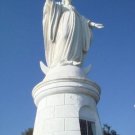
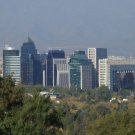
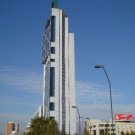

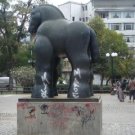
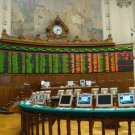
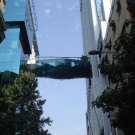
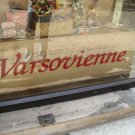
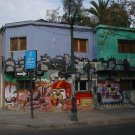
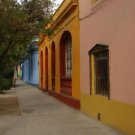
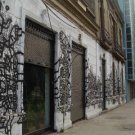
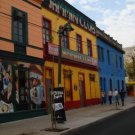
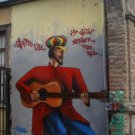
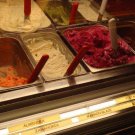
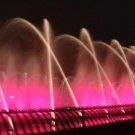
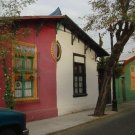
 Zasoby:
Zasoby: 






